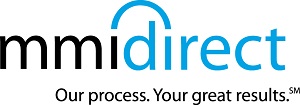A guest blog by Ryan Woroniecki
Do you ever feel like you’re just mailing into a void? Like your letters and packages are entering some no man’s land?
Well, you don’t have to feel that way. Not with the help of prospect research, at least.
 Whether you want to take a DIY approach to prospect research or seek the assistance of a tool, your nonprofit stands to gain from learning more about your donors. And that’s what prospect research enables you to do!
Whether you want to take a DIY approach to prospect research or seek the assistance of a tool, your nonprofit stands to gain from learning more about your donors. And that’s what prospect research enables you to do!
Donors are far more responsive to direct mail appeals that they connect with, and prospect research can put the right information in your fundraiser’s hands to do just that. By comparing your donor pool to philanthropic and wealth databases, your fundraisers can gain a more well-rounded understanding of what makes your prospects tick.
Below you’ll find four ways your organization can leverage the information from a prospect screening for more effective mailings.
1. Figuring out who best to reach out to
Every nonprofit wants to make the most of their limited time and resources. As such, it’s critical that your team ensures that they’re reaching out to the best giving prospects. The cost of postage can add up over time, so you’ll want to ensure you’re sending your mailings to the recipients who are most likely to respond.
Which donors? Prospect research can be a huge help in answering that question
The ideal donor possesses a particular mix of two key traits:
1. A strong philanthropic drive.
2. The financial capacity to make a charitable contribution.
As a nonprofit, you’ll want to prioritize the first point, philanthropic drive, but the second point, financial capacity, can be the difference between a small gift and a major gift.
Prospect research has the power to help in both regards. Let’s look at each point one at a time.
#1: A Strong Philanthropic Drive
A screening of your prospects can look at their:
• Past giving to your organization and others.
• Volunteering with your organization and others.
• Event attendance at nonprofit fundraising events.
• Participation in certain fundraising activities.
All four of those points quite blatantly explore philanthropic drive, but interestingly, there is a select group of philanthropic markers that many don’t traditionally associate with charitable giving. For instance:
- Real estate ownership — Real estate ownership certainly speaks to wealth, but it has a strong correlation to giving as well. In fact, those who own property valued at $2+ million are 17 times more likely to make a charitable contribution than the average prospect.
- Political giving — Perhaps more obviously related to philanthropic drive, political giving is a powerful indicator. A person who has donated funds to a political campaign has proven that he (1) has the financial capacity to make a contribution and (2) is willing to act on donation requests. Those are critical traits to have. Their power is evidenced by the statistic that donors who have contributed $2,500+ in FEC giving are 14 times more likely to make a charitable contribution than the average prospect.
#2: The Financial Capacity to Make a Charitable Contribution
Interestingly, both real estate ownership and political giving are wealth markers as well as philanthropic indicators. Other popular means of determining wealth include examining a donor’s stock ownership and estimated salary.
You want to be sending your direct mail to prospects who both want to be donors and have the financial ability to do so. That awareness can drastically increase response rate.
Depending on the specific direct mail campaign at hand, the importance of both philanthropic and wealth markers is going to vary.
For instance, an informational mailing on your newly launched major giving program should be sent to prospects with a top-tier philanthropic drive and financial capacity. On the other hand, if you’re looking at collecting smaller donations for your annual fund, wealth qualifiers will be far less significant.
Generally speaking, when you’re considering the two pieces of the prospect research equation in terms of likelihood of giving, lead with philanthropy and qualify with wealth.
2. Getting the nitty-gritty details right
There’s nothing worse than getting a letter in the mail that’s asking you for money and doesn’t even bother to spell your name right.
Nonprofits working with large swaths of data are facing an uphill battle in that regard.
Thanks to a diversity of giving avenues from text-to-give to over the phone to crowdfunding, fundraising organizations have funds and donor data flowing into their CRMs from all sides.
There’s simply so much information to keep track of. This means that whether the donor data is incorrectly entered into the database to begin with or an important update is overlooked, there’s room for error. And many of those errors can be costly mistakes when it comes to nonprofit direct mail campaigns.
Imagine you’ve given multiple gifts to a nonprofit over a few years. You feel a strong connection to the organization and its cause. Then, one day you get a fundraising appeal in the mail that misspells your name and fails to recognize your past contributions. Suddenly, you’re far less likely to be responsive.
Prospect research can be a big help in this department. Filling in such details as the prospect’s:
- Preferred name: Does Nathaniel Lawson always go by Nate? Did Susie Johnson change her name when she married Nate Lawson?
- Date of birth: Knowing a donor’s date of birth can affect many facets of fundraising including donor responsiveness. Think about how much more likely you’d be to respond to an organization’s direct mail appeal if they’d sent you a “Happy Birthday Email” the month before. Donors deserve to be treated like people and not just like piggy banks. On a larger scale, you’ll also be able to generally predict donor behavior based on donor age. Don’t pigeonhole anyone, but there are certainly some broad stroke truths about the difference between donor age groups, such as millennials versus baby boomers.
- Address: Not to bury the lead here, but you can’t have a responsive donor if the mail you’re sending never even reaches her. Make sure your addresses are accurate and up-to-date.
The nitty-gritty can be the difference between your prospect sending you a check and your prospect throwing your letter in the recycling bin. Proper data hygiene is a must!
3. Knowing when to make the ask
Asking for donations is no cakewalk. Whether you’re calling a prospect up, sending an email, or mailing a carefully crafted letter, you’re going to encounter plenty of obstacles.
In order to minimize some of those obstacles and maximize responsiveness, you’ll want to try to choose the ideal time to make the ask.
Using a combination of common sense and prospect research, you can determine the best time to send your direct mail appeal.
Consider the following points before you send out your next round of letters:
- Ask for gifts when people are in giving moods. That tends to happen around the holidays and year’s end.
- Space out when you ask. Using prospect research, you can make sure your information is accurate on when your prospects last gave to your organization and to other nonprofits. For example, if your screening revealed that a new prospect gave a gift to a similar organization and that’s why you’re pursuing them, you wouldn’t want to reach out immediately after they’ve given a large contribution elsewhere. Let the dust settle so to speak and greatly improve responsiveness.
- Make your asks when your donors historically give. Leveraging the historical data from a prospect screening, take a look at your prospects’ giving trends. Maybe one prospect gives most commonly in October. For whatever reason, that’s their big month, so you should be coordinating your ask around that time of year.
Asking for donations is never going to be an easy task, but you can make it far better with the creative use of donor data.
4. Determining the right amount to ask for
You probably wouldn’t ask a recent college grad to donate $5,000, just like you wouldn’t ask a millionaire to donate $10.
A major factor in the success of your organization’s direct mail solicitation boils down to one key move — determining the right amount to ask for.
While there’s no Magic 8 Ball to confirm the exact amount you should be requesting, there is prospect research.
By analyzing a prospect’s wealth markers, like the ones in point one, you can make a more accurate estimate of how much someone will feasibly give.
The popular assessment methods for giving capacity are as follows:
- 5% of a prospect’s visible assets are equivalent to his/her giving capacity over five years.
- 5 times the sum total of four annual gifts to similar organizations (yours can be included) is equivalent to the prospect’s giving capacity over five years.
For more on determining giving capacity, you can check out this helpful article.
Just remember, you don’t want to overlook philanthropic markers. They can completely change the game when it comes to deciding how much you should ask for.
Ask for too little and you’ll leave money on the table. Ask for too much and you risk no donor response at all. Let the research guide you to an appropriate middle ground.
——————————————
At the end of the day, embarking on prospect research is about learning as much as you can about your donors and prospects. Let all of that knowledge inform your direct mail strategies and your response rate will reflect all your hard work.
Ryan Woroniecki is the Vice President of Strategic Partnerships at DonorSearch,
a prospect research, screening, and analytics company that focuses on proven philanthropy.
He has worked with hundreds of nonprofits and is a member of APRA-MD. When he isn’t working,
he is an avid kickball player.




